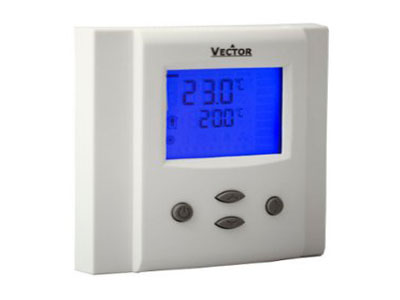Key Takeaway
Vector control, also known as field-oriented control (FOC), is a method used to regulate the performance of three-phase AC motors by controlling both the magnitude and angle of the motor’s magnetic field. By splitting the motor’s stator current into two components—one controlling the magnetic field and the other managing torque—vector control ensures that the motor operates efficiently under various load conditions.
This precise control allows for improved torque management, making it ideal for industrial applications that require high performance and efficiency. Compared to scalar control, vector control offers more accuracy and dynamic response, which is particularly beneficial in complex systems like robotics, CNC machines, and elevators where speed and torque consistency are critical.
Introduction to Vector Control
Vector control, also known as field-oriented control (FOC), is a motor control method used primarily for AC motors, like induction motors and permanent magnet synchronous motors (PMSM). It allows the control of torque and speed separately, providing better performance and efficiency compared to traditional control methods. Vector control achieves this by breaking down the motor’s current into two components—one for torque and one for magnetic flux—allowing precise control over each. This method has gained popularity in modern industrial applications because it enables AC motors to function more like DC motors, known for their precise control and high efficiency.

How Vector Control Works in Electric Motors
Vector control operates by decoupling the magnetic field and torque control in the motor, allowing them to be regulated independently. Traditional AC motors control both torque and speed through one set of parameters, which can limit performance, particularly under varying load conditions. With vector control, the motor’s three-phase currents are transformed into two separate control signals: one controls the magnetic flux, and the other controls the torque. This separation allows for more precise motor performance, especially when the motor is under high stress or changing speeds frequently.
This method relies heavily on real-time feedback from sensors such as encoders to continuously adjust the torque and speed independently. As a result, vector control delivers smoother motor operation, greater energy efficiency, and faster response times compared to scalar control methods.
Benefits of Vector Control in Industrial Applications
Vector control offers numerous advantages in industrial applications, particularly where efficiency, precision, and performance are critical. By decoupling torque and flux control, vector control enables motors to achieve faster acceleration and deceleration, which is essential in industries like automotive, robotics, and aerospace. It also improves energy efficiency, as the motor can adjust torque and flux independently to match load demands, reducing energy waste.
In applications like conveyor systems, cranes, or elevators, where smooth control is necessary under varying loads, vector control helps maintain consistent speed and torque. Furthermore, vector control allows for low-speed operation with high torque, making it ideal for applications that require precise positioning, such as in CNC machines or robotic arms.
Vector Control vs Scalar Control
While vector control focuses on decoupling the control of torque and magnetic flux, scalar control manages both variables simultaneously, often making it less precise and efficient. Scalar control is simpler and more cost-effective but doesn’t offer the same level of performance as vector control, especially in dynamic or high-performance environments. Scalar control adjusts the voltage and frequency of the motor without considering real-time feedback, which can lead to slower responses and less efficient motor operation, particularly under changing loads.
In contrast, vector control continuously adjusts to real-time motor conditions, providing faster response times and higher precision. This makes it a preferred method for complex tasks where performance and accuracy are critical, such as in automated manufacturing and high-speed industrial equipment.
Future Trends in Vector Control Technology
As industries increasingly demand high efficiency and performance, vector control is set to evolve further. Advances in computing power and sensor technology are enabling more precise and faster real-time adjustments, improving the overall performance of vector-controlled motors. For example, integrating AI and machine learning algorithms with vector control systems could optimize motor performance by learning from real-time data and automatically fine-tuning control parameters.
Another trend is the integration of wireless and IoT (Internet of Things) technologies, allowing remote monitoring and control of vector-controlled motors. This opens new possibilities for predictive maintenance and energy optimization, as data collected from the motors can be analyzed to detect inefficiencies or potential failures before they occur.
Conclusion
Vector control has become an indispensable method in modern electric motor management, particularly in industries that require high precision and efficiency. By separating the control of torque and flux, vector control allows motors to perform more efficiently and with greater flexibility, making it the go-to method for complex and dynamic tasks. As technology continues to advance, vector control is set to play an even more significant role, offering enhanced performance through innovations like AI integration and IoT connectivity. Understanding and implementing vector control is essential for industries seeking to optimize motor performance and energy efficiency.
